Fixed: Boot Drive Not Showing Up in BIOS | 2024 Best Tips🔥
The BIOS (Basic Input/Output System) is the firmware responsible for initiating your PC's operating system upon startup. Through BIOS, you can configure boot priority in alignment with your preferences. If occasionally, issues arise where the Windows boot drive is not showing up in BIOS; it can prevent booting up your Windows system.
Why does this issue emerge, and how can you efficiently fix it? In this post, Qiling offers a comprehensive solution guide, presenting various strategies to solve the problem.
How to Fix Boot Drive Not Showing Up In BIOS?
To fix the boot drive not showing up in BIOS, restart your computer to observe any improvements. If the issue vanishes, you're set. If not, learn the below methods.
- Method 1: Check Physical Connections
- Method 2: Repair MBR
- Method 3: Enable USB in BIOS
- Method 4: Restore BIOS to Default Settings
- Method 5: Check for Disk Errors
- Method 6: Replace Hard Disk
- Method 7: Hard Reset Computer

How to Fix BIOS Recognizes SSD But Won't Boot
Troubleshoot why BIOS recognizes SSD but won't boot to learn effective fixes & solutions to resolve this issue and get your system running smoothly.
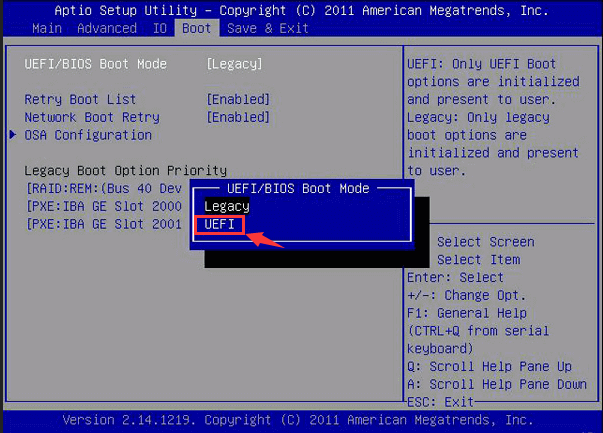
Method 1: Check Physical Connections
Loose physical connections and corrupt USB ports can lead to the "hard drive not showing up in BIOS" problem. When facing this, you should check USB cables and ports. Test another USB port or change a cable to provide a proper boot drive connection.
Method 2: Repair MBR
A corrupted or misconfigured Master Boot Record (MBR) could be the culprit. Qiling Disk Master provides a dedicated feature to rebuild the MBR, fixing this critical element and resolving your boot drive visibility problem. This method is incredibly effective in fixing MBR-related issues.
Follow the steps to rebuild MBR:
Step 1. Create a WinPE bootable disk
- Launch Qiling Disk Master, and click "Tools" tab page. Select "Create bootable media".
- Click "Next" to finish the process.
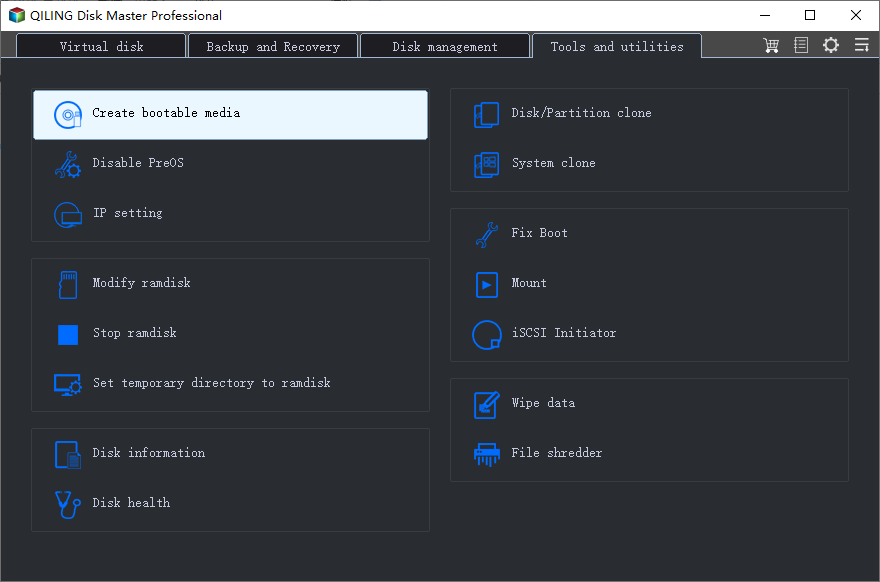
Step 2. Boot Qiling Disk Master Bootable USB
- Connect the bootable USB or CD/DVD to your PC.
- Press F2 or Del when you restart the computer to enter the BIOS screen. Set and boot your computer from "Removable Devices" or "CD-ROM Drive". And then Qiling Disk Master will run automatically.
Step 3. Rebuild MBR
- Right-click the disk and choose "Advanced" -> "Rebuild MBR".
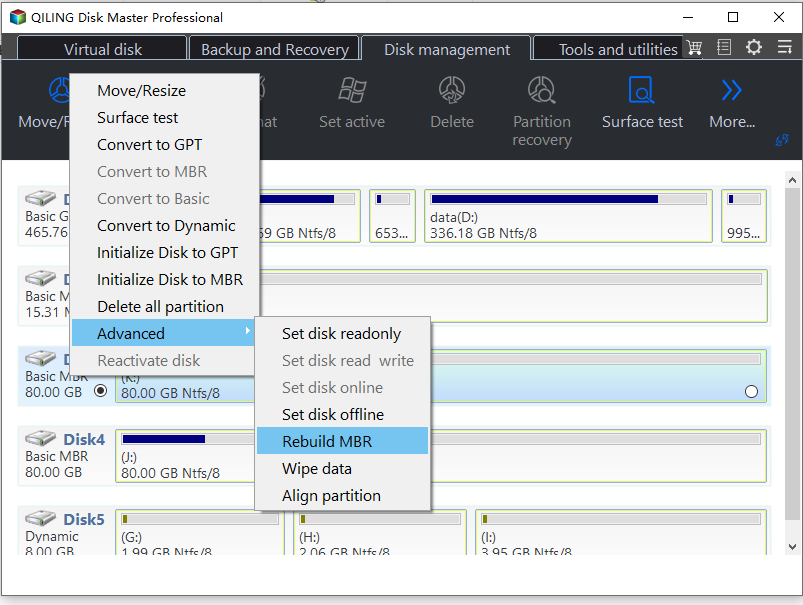
- Select the disk and the type of MBR. Then, click "Rebuild".
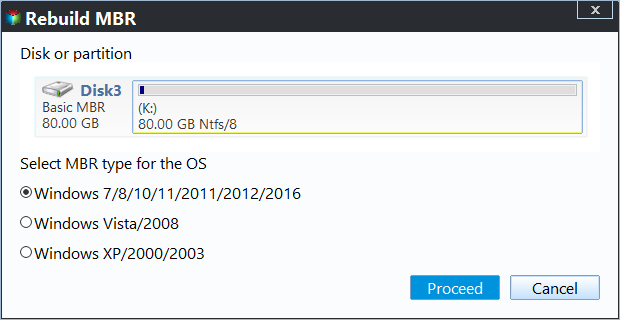
- After that, you can see "MBR has been successfully rebuilt on Disk X".
Qiling Disk Master is a product with excellent compatibility that can fix any error that requires MBR repair, such as MBR error 1 and more of other situations:
- System cannot find any bootable devices
- The computer has rebooted from a bugcheck
- Default Boot Device Missing or Boot Failed
If you have encountered similar errors, you can also seek help from this product.
Method 3: Enable USB in BIOS
Sometimes the motherboard may turn off the unused USB ports in BIOS. As a result, this error arises "Windows boot drive not showing up in BIOS." Follow these steps to enable USB in BIOS:
Step 1. Turn on your PC, and enter the setup utility instantly by pressing a relevant hotkey.
Note: Hotkeys can be different and depend on your PC's model. It could be F1, F2, F10, F12, Del, or Esc. Look for on-screen prompts for the exact BIOS entry key on your computer.
Step 2. Once you're into the BIOS, go to "Advanced."
Step 3. Move to Onboard Devices/Integrated Peripherals and hit the "Enter" button to continue.
Step 4. Choose "USB Controller" and adjust the setting to "Enabled" using the appropriate key press.
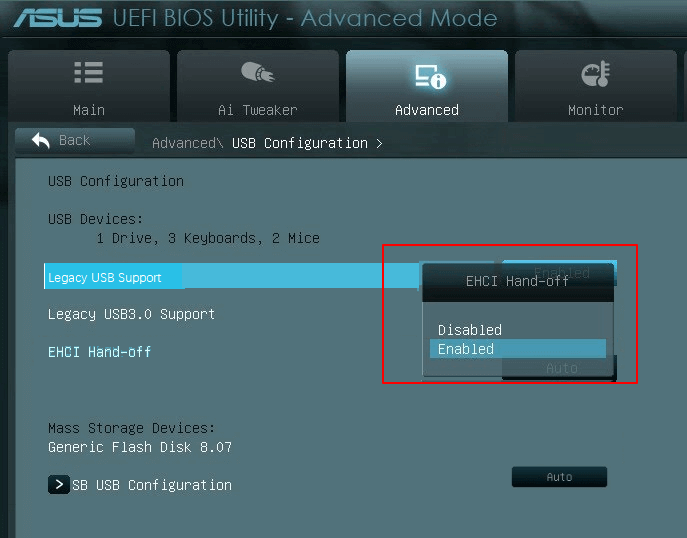
Step 5. Hit F10 to save modifications, and restart the system to check if the problem is resolved.
Read Also: Format Hard Drive from BIOS Windows 10
Method 4: Restore BIOS to Default Settings
You can try to restore BIOS to default settings to fix the issue. To perform this task, follow the steps:
Step 1. Enter your PC's BIOS settings.
Step 2. Locate the option that corresponds to restoring "Setup Defaults." This may appear as Load Default, Load Setup Defaults, Load Default Settings, Load BIOS Defaults, or Load Optimal Defaults. Choose this option and press Enter to navigate to the Setup Confirmation window.
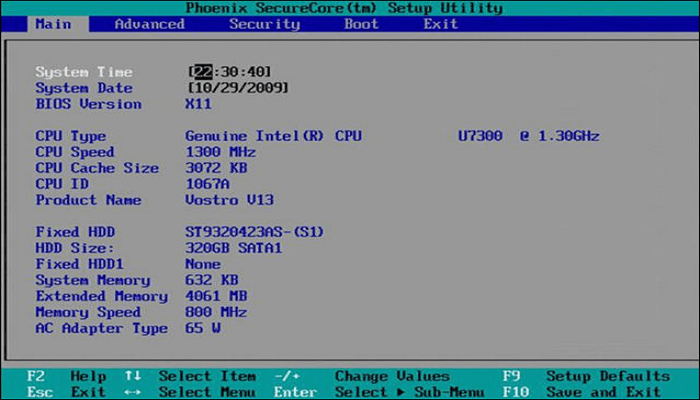
Step 3. Select "Yes" to confirm in the Setup Confirmation window.
Step 4. After this, your PC will be restarted, and you can see if it boots up successfully.
Method 5: Check for Disk Errors
This method brings us to the forefront of fixing errors via an excellent solution. Here is Qiling Disk Master, which comes first with its file system error check feature. This feature recognizes and repairs file system errors that can cause the "boot drive not showing up in BIOS" issue. Let's explore how this method can contribute to resolving the concern and restoring normal functionality to your system.
Follow the operational steps below:
Step 1. Right-click the target partition that has a problem.
Step 2. Choose "Advanced" > "Check File System".
Step 3. Confirm if you want to hide the partition or not.
Step 4. In the Check File System window, check the "Fix the error on the disk" option.
Step 5. Click "Start" to check errors on your partition.
Qiling Disk Master is one of the best hard drive repair tool, and it can even repair Windows 10 from USB with a quick and easy guide. For more information, click the buttons:
Method 6: Replace Hard Disk
If the issue of "boot drive not showing up in BIOS" remains mysterious despite your efforts with the techniques mentioned above, it could signal a more deep concern, potential physical damage to your boot drive. To tackle this hurdle, you can replace your ailing boot drive with a fresh SSD or HDD to restore your system to its normal condition.

How to Replace Hard Drive in Dell Laptop [Step-by-Step]
This passage is dedicated to providing you with a step-by-step guide on replacing hard drive in Dell laptop, along with the best cloning solution to move your data.
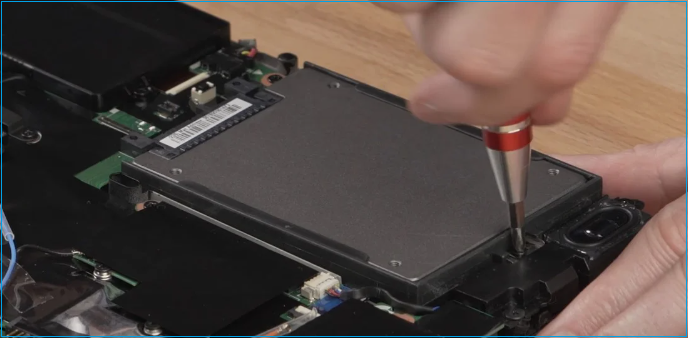
Method 7: Hard Reset Computer
You can also hard reset the computer to fix the boot drive not showing up in BIOS. But be careful, as this operation will delete all your data and settings. So, to avoid data loss, back up all of your data using the Qiling Disk Master Tech tool. Through this tool, you can back up your data with a few clicks.
A hard reset action possibly re-establishes your disk drive and BIOS connection. So, try it by following the steps:
Step 1. Turn off your PC and disconnect the power cable from the outlet.
Step 2. Press and hold the power button for approximately 20 seconds to discharge any residual electrical charge within the system.
Step 3. Reconnect the power and start your PC.
Step 4. When started, choose the "Start Windows normally" option.
Why Boot Drive Not Showing Up In BIOS?
Your drive may not show up in BIOS due to various factors/reasons. You should learn and gain knowledge about its root causes to proactively manage the issue and take necessary measures. The following are the basic reasons behind the error:
- Incorrect Cable and Port Connections: Loose cables or faulty USB ports can cause your boot drive invisible.
- Incorrect BIOS Settings: Misconfigured BIOS settings might lead to an undetectable boot drive.
- MBR (Master Boot Record) Corruption: If the MBR is corrupted, your boot drive might disappear.
- Bad Sectors on Hard Disk: Hard disks with bad sectors can stop boot drive visibility. Detecting and repairing these sectors are essential.
- USB Not Enabled in BIOS: Some systems automatically turn off unused USB ports. Enabling USB ports can resolve this.
We hope your problem is indeed solved at this stage. Please share this guide with others so that they can also brighten the path to solving this issue.
Conclusion
The frustration of the mysterious issue of "boot drive not appearing in BIOS" is undeniable. It often requires a lot of time to find the reasons and solutions. But don't worry, as this article traces the potential causes and provides the proper solutions to get relief from this challenge.
For an efficient solution, the advanced functionalities of Qiling Disk Master come to aid you instantly. It offers features like MBR repair and file system error checks to restore your system's functionality. So, download and install the Qiling Disk Master, and enjoy its multiple functionalities/features!
FAQs About Boot Drive Not Showing Up In BIOS
If you still require clarity and have queries about the boot drive not showing up in BIOS error, please read the FAQs below that may help you.
1. How to fix BIOS not detecting hard drive?
If your BIOS fails to detect your hard drive, follow the below steps to fix it:
- Verify that the drive is connected correctly.
- Check SATA/IDE cable and power connections.
- Reboot your system and enter BIOS settings.
- Look for the drive in the BIOS, and if missing, move to the "Hard Drive Not Showing Up in BIOS" methods mentioned earlier.
2. Why SSD not showing up in BIOS?
If your SSD is not showing up in BIOS, it could be due to various reasons such as improper connections, compatibility issues, outdated BIOS, or SSD firmware.
3. How to enable my hard drive in BIOS?
To enable a hard drive in BIOS, follow these steps:
- Restart your computer and enter BIOS settings.
- Navigate to the "Advanced" tab.
- Navigate to Onboard Devices/Integrated Peripherals.
- Choose "USB Controller" and adjust the setting to "Enabled" using the appropriate key press. Hit F10 to save modifications and restart the system.
Related Articles
- Featured Partition Magic for Windows Server Free Download 2024
- Windows 10 Not Accepting Password? 7 Quick Solutions
- Windows 11 Home VS Pro, Which Is Better? Your Tips Are Here
- How to Format SD Card on Windows 11? Here Are 4 Ways for You in 2024